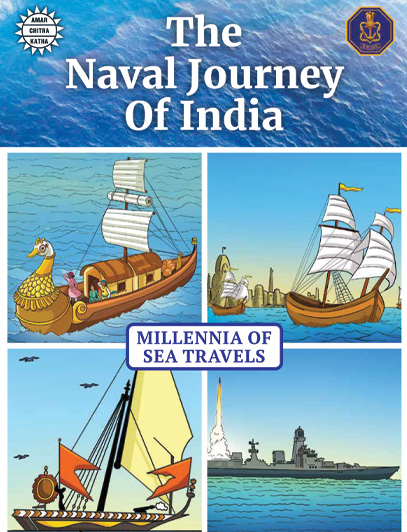Architects of the Indian Constitution
- January 25, 2022


Architects of the Indian Constitution
- January 25, 2022
By Kayva Gokhale
Republic Day is celebrated on the 26th of January each year to mark the day that the Constitution of India came into effect. The Constitution of India or the Bharatiya Samvidhan is the document that is considered the supreme law of the nation. It lays down rules and frameworks regarding political structures and procedures of the government, civil, criminal and other codes as well as the rights and duties of the citizens. It is the longest written constitution in the world and it took two years, eleven months and seventeen days to be drafted. The constitution was completed and adopted on 26th November 1949 and came into effect on 26th January 1950. It was therefore on 26th January that the Union of India became the Republic of India. Here are the great minds responsible for the creation of our constitution:
To receive more such stories in your Inbox & WhatsApp, Please share your Email and Mobile number.
Sir Benegal Narsing Rau was the first person who contributed to the Indian constitution. He was a civil servant, who went on to become the first Indian Judge in the International Court of Justice. He was appointed as the constitutional adviser in 1946, and was responsible for the determination of the general structure of the constitution. He prepared and completed the first draft in 1948, which consisted of 243 articles and 13 schedules.
After the completion of the first draft, the constitution was handed over to a seven-member drafting committee, which was headed by Dr Bhimrao Ramji Ambedkar, for further discussion and amendments. Dr Ambedkar was a jurist, economist, politician and social reformer who worked for the Bahujan community. He became the first Law and Justice Minister of Independent India and received the Bharat Ratna in 1990. Today, he is often referred to as the Father of the Indian Constitution.
Having served as the Advocate General of Madras State from 1929 to 1944, Dewan Bahadur Sir Alladi Krishnaswami Ayyar was an important member of the Constituent Assembly as well as the Drafting Committee. Despite having studied History at Madras Christian College, he was interested in law and passed the B.L. exam to become one of the leading members of the Bar in India.
Dewan Bahadur Sir Narasimha Gopalaswami Ayyangar was the Prime Minister of the princely state of Kashmir and later became the leader of the Rajya Sabha. He was a ‘minister without a portfolio’, who primarily looked after Kashmir Affairs and became the Minister for Railways. He represented India at the United Nations Security Council to discuss Kashmir and drafted Article 370 that granted autonomy to Jammu and Kashmir.
Kanhaiyalal Maneklal Munshi was an Independence activist, politician and writer from Gujarat. A lawyer by profession, he later became an author writing under the pen name Ghanshyam Vyas. Apart from being an important member of the Drafting Committee, K.M. Munshi had also held posts such as Minister of Agriculture and Food of India and Governor of Uttar Pradesh.
Sir Syed Muhammad Saadulla was the Prime Minister of Assam in British India and was also the Chairman of Guwahati Municipality. Having worked in Assam at different posts of the government, he was elected to the Constituent Assembly of India in 1947 and played an integral role in the drafting process. He was the only member from the North Eastern States to be elected to the committee.
B.L. Mitter worked with the Dewan of Baroda and was involved in the process of integration of the princely states after Independence. He was later appointed as a member of the Drafting Committee. He had previously worked in the Law Ministry and also as the Advocate General of West Bengal. B.L. Mitter had to resign from the committee due to ill-health and was replaced with Madhav Rao, a legal advisor to the Maharaja of Vadodara.
Debi Prasad Khaitan was the owner and founder of one of the oldest law firms in India, Khaitan and Co. His law firm was a pioneer in many ways, being one of the few firms to represent Indian industrialists in the pre-independence era. He passed away in 1948, after which he was replaced by T.T. Krishnamachari, an economist and politician who went on to become the Finance Minister.
To receive more such stories in your Inbox & WhatsApp, Please share your Email and Mobile number.

Comic of The Month
The Naval Journey of India Book I
This book is the first of a three-book series that takes a deep and detailed look at India's Naval History and a deep insight into the lives of our men and women in white. But any series on the Indian Navy has to start at the very beginning - exploring India's celebrated maritime history. Join our little hero, Bharat, and his grandfather, Commodore Sagar, as they sail into the deep blue waters of time. Book I of The Naval Journey of India takes a sweeping look at India's maritime endeavours, how the seas impacted us over millennia and how the oceans made us who we are.